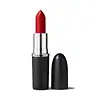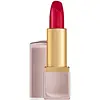What's inside
What's inside
 Key Ingredients
Key Ingredients

 Benefits
Benefits

 Concerns
Concerns

 Ingredients Side-by-side
Ingredients Side-by-side

Polybutene
Octyldodecanol
EmollientPentaerythrityl Tetraisostearate
EmollientRicinus Communis Seed Oil
MaskingSynthetic Wax
AbrasiveDiisostearyl Malate
EmollientVp/Hexadecene Copolymer
Hydrogenated Polyisobutene
EmollientHdi/Trimethylol Hexyllactone Crosspolymer
Microcrystalline Wax
Emulsion StabilisingSimmondsia Chinensis Seed Oil
EmollientSynthetic Beeswax
Emulsion StabilisingArgania Spinosa Kernel Oil
EmollientRosa Moschata Seed Oil
EmollientCamellia Oleifera Seed Oil
Skin ConditioningPunica Granatum Flower Extract
Skin ConditioningPolyglyceryl-3 Diisostearate
EmulsifyingSqualane
EmollientSilica
AbrasiveDisteardimonium Hectorite
StabilisingVanillin
MaskingPentaerythrityl Tetra-Di-T-Butyl Hydroxyhydrocinnamate
AntioxidantTocopherol
AntioxidantMica
Cosmetic ColorantCI 77891
Cosmetic ColorantCI 77491
Cosmetic ColorantCI 77492
Cosmetic ColorantCI 77499
Cosmetic ColorantCI 42090
Cosmetic ColorantCI 77163
Cosmetic ColorantCI 77400
Cosmetic ColorantCI 77742
Cosmetic ColorantCI 15850
Cosmetic ColorantCI 45380
Cosmetic ColorantCI 45410
Cosmetic ColorantCI 73360
Cosmetic ColorantCI 17200
Cosmetic ColorantCI 19140
Cosmetic ColorantCI 15985
Cosmetic ColorantPolybutene, Octyldodecanol, Pentaerythrityl Tetraisostearate, Ricinus Communis Seed Oil, Synthetic Wax, Diisostearyl Malate, Vp/Hexadecene Copolymer, Hydrogenated Polyisobutene, Hdi/Trimethylol Hexyllactone Crosspolymer, Microcrystalline Wax, Simmondsia Chinensis Seed Oil, Synthetic Beeswax, Argania Spinosa Kernel Oil, Rosa Moschata Seed Oil, Camellia Oleifera Seed Oil, Punica Granatum Flower Extract, Polyglyceryl-3 Diisostearate, Squalane, Silica, Disteardimonium Hectorite, Vanillin, Pentaerythrityl Tetra-Di-T-Butyl Hydroxyhydrocinnamate, Tocopherol, Mica, CI 77891, CI 77491, CI 77492, CI 77499, CI 42090, CI 77163, CI 77400, CI 77742, CI 15850, CI 45380, CI 45410, CI 73360, CI 17200, CI 19140, CI 15985
Ozokerite
Emulsion StabilisingCetyl PEG/PPG-10/1 Dimethicone
EmulsifyingPolyglyceryl-4 Isostearate
EmulsifyingHexyl Laurate
EmollientPolybutene
Octyldodecyl Neopentanoate
EmollientEthylhexyl Palmitate
EmollientDiisostearyl Malate
EmollientPentaerythrityl Tetraisostearate
EmollientMica
Cosmetic ColorantBis-Diglyceryl Polyacyladipate-2
EmollientC10-30 Cholesterol/Lanosterol Esters
EmulsifyingCera Microcristallina
Emulsion StabilisingParaffin
PerfumingSilica
AbrasiveAloe Barbadensis Leaf Extract
EmollientCeramide AP
Skin ConditioningCeramide NP
Skin ConditioningEthylene/Propylene Copolymer
AbrasiveNylon-12
Passiflora Edulis Seed Oil
EmollientPentaerythrityl Tetraethylhexanoate
EmollientPolyethylene
AbrasiveSynthetic Wax
AbrasiveTocopheryl Acetate
AntioxidantParfum
MaskingCI 42090
Cosmetic ColorantCI 77491
Cosmetic ColorantCI 77499
Cosmetic ColorantCI 45410
Cosmetic ColorantCI 17200
Cosmetic ColorantCI 15850
Cosmetic ColorantOzokerite, Cetyl PEG/PPG-10/1 Dimethicone, Polyglyceryl-4 Isostearate, Hexyl Laurate, Polybutene, Octyldodecyl Neopentanoate, Ethylhexyl Palmitate, Diisostearyl Malate, Pentaerythrityl Tetraisostearate, Mica, Bis-Diglyceryl Polyacyladipate-2, C10-30 Cholesterol/Lanosterol Esters, Cera Microcristallina, Paraffin, Silica, Aloe Barbadensis Leaf Extract, Ceramide AP, Ceramide NP, Ethylene/Propylene Copolymer, Nylon-12, Passiflora Edulis Seed Oil, Pentaerythrityl Tetraethylhexanoate, Polyethylene, Synthetic Wax, Tocopheryl Acetate, Parfum, CI 42090, CI 77491, CI 77499, CI 45410, CI 17200, CI 15850
Ingredients Explained
These ingredients are found in both products.
Ingredients higher up in an ingredient list are typically present in a larger amount.
Ci 15850 is the pigment color red. It is an azo dye and created synthetically.
Azo dyes need to be thoroughly purified before use. This allows them to be more stable and longer-lasting.
This ingredient is common in foundations, lipsticks, and blushes. This color is described as brown/orangey red.
It has many secondary names such as Red 6 and Red 7. According to a manufacturer, Red 6 usually contains aluminum.
Learn more about CI 15850Ci 17200 is a synthetic reddish-purple dye.
Ci 42090 is a synthetic dye created from petroleum. It is used to give a bright blue color to cosmetics, medicine, and food.
CI 45410 is a synthetic red-pigment and dye.
It often goes by both Red 28 or Red 27; manufacturers label both ingredients as CI 45410.
This dye is commonly found in makeup because it imparts a vivid color. Some types of this dye change color based on pH level and interaction with moisture:
Your skin has a natural pH of around 4.5 - 5.5.
According to the FDA, CI 45410 is not permitted for use in eye products.
Red 27 is a flourescein dye and commonly used as a fluorescent tracer in medicine.
Learn more about CI 45410Ci 77491 is also hydrated iron III oxide. It's sole purpose is to give a red/pink hue to products.
Iron III oxides are classified as inorganic chemicals for coloring.
Synthetically created Ci 77491 is considered safer than those naturally found. This is because the synthetically created version may contain less impurities. Iron oxides are generally non-toxic and non-allergenic.
Learn more about CI 77491Ci 77499 is also hydrated iron III oxide. It is created from mixing red and black iron oxides. This helps give shades of darkness to a product.
Iron III oxides are classified as inorganic chemicals for coloring.
Diisostearyl Malate is an emollient and most often used in lip products. It comes from isostearyl alcohol, a fatty acid, and malic acid, an AHA.
As an emollient, Diisostearyl Malate helps create a thin film on your skin to trap moisture in. This helps keep your skin soft and smooth.
Mica is a naturally occurring mineral used to add shimmer and color in cosmetics. It can also help improve the texture of a product or give it an opaque, white/silver color.
Serecite is the name for very fine but ragged grains of mica.
This ingredient is often coated with metal oxides like titanium dioxide. Trace amounts of heavy metals may be found in mica, but these metals are not harmful in our personal products.
Mica has been used since prehistoric times throughout the world. Ancient Egyptian, Indian, Greek, Roman, Aztec, and Chinese civilizations have used mica.
Learn more about MicaPentaerythrityl Tetraisostearate is derived from isostearic acid. It is an emollient and emulsifier.
The highest concentration of this ingredient is found in lipsticks.
This ingredient is minimally water soluble and may not be Malassezia folliculitis, or fungal-acne safe.
Learn more about Pentaerythrityl TetraisostearatePolybutene is used to help control the viscosity of a product. This just means it helps adjusts the texture.
It is a polymer and does not get absorbed into the skin due to its large size.
Studies found this ingredient did not irritate skin in concentrations below 15%.
Learn more about PolybuteneSilica, also known as silicon dioxide, is a naturally occurring mineral. It is used as a fine, spherical, and porous powder in cosmetics.
Though it has exfoliant properties, the function of silica varies depending on the product.
The unique structure of silica enhances the spreadability and adds smoothness, making it a great texture enhancer.
It is also used as an active carrier, emulsifier, and mattifier due to its ability to absorb excess oil.
In some products, tiny microneedles called spicules are made from silica or hydrolyzed sponge. When you rub them in, they lightly polish away dead skin layers and enhance the penetration of active ingredients.
Learn more about SilicaSynthetic Wax is created from fossil fuels such as natural gas. It is used to enhance texture, adjust pH, and as an occlusive.
It may also be used as an abrasive ingredient to exfoliate the skin.
Synthetic Wax may not be fungal acne safe.
Learn more about Synthetic Wax